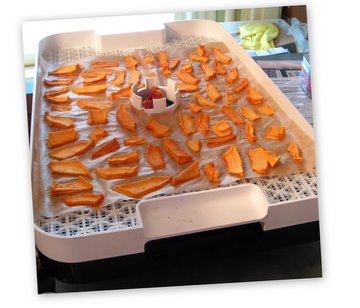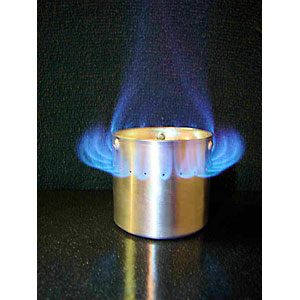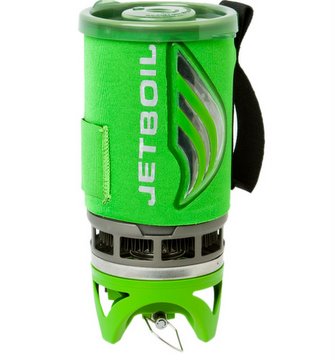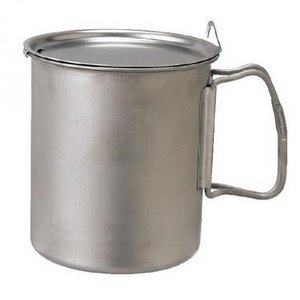Introduction
Building on my earlier posts about lightweight shelters, sleeping bags, and backpacks, we'll now discuss the pros and cons of different lightweight backpacking stoves and how to think about stoves and cooking from the perspective of a lightweight backpacker.
A gear system is a group of items organized around a particular function, such as cooking. For example, a lightweight stove system can include items that serve multiple functions at the same time, like a windscreen that also serves as a pot stand.
Using a single piece of gear for multiple purposes is one of the cornerstones of lightweight backpacking and it's helpful to start thinking this way if you're assembling a new stove system.
It's important not to get too carried away with gear weight, especially with a survival item like a stove. There are other variables to consider including fuel availability, safety, boil times, and cost that are just as important and can trump gear weight.
Finally, I describe how to select a stove for one person in three-season conditions, excluding winter. While some of the stoves and stove systems I mention below can be used to cook for multiple people or to melt snow for drinking water, those topics are beyond the scope of this article.
Compactness
The compactness of backpacking gear is often overlooked by hikers getting into lightweight backpacking. Gear that's compressible or compact is important because you can reduce the size and weight of your backpack. It's another reason why you want to get a more compact shelter and a highly compressible down sleeping bag or quilt.
Having a compact stove system can be more important than how much it weighs, since you can save more weight by carrying a smaller backpack than you'd ever save by carrying the lightest possible stove system.
The ideal stove system is one that takes up the least amount of space in your pack and fits together like nested Russian dolls. This isn't always achievable, but it can be a useful goal for choosing between different stoves and cooking gear. This strategy eliminates most white gas stoves for lightweight backpacking because they are not compact.
Some backpacking stoves, like the Jetboil Flash (MSRP $99.95), include integrated pots, cups, or fuel bottles. This can be valuable because it all fits together in a compact system that doesn't take up much backpack space.
The only downside to an all-in-one option is if you want to mix and match different components with different stoves depending on the location or season.
Cooking Styles
Lightweight backpackers tend to eat very simple meals. Breakfast can involve boiling water for coffee or tea and making instant oatmeal. Lunch is rarely cooked, while dinner is usually a freezer bag meal or a simple one-pot meal.

Food dehydrator
Freezer bag cooking is a style of food preparation where hikers premix dehydrated foods, made at home or purchased in bulk, in one-quart Ziploc bags before they go on a trip. To cook a meal, boil water, pour it directly into the bag, and wait ten minutes for the food to rehydrate. This reduces the amount of trash hikers need to pack out.
The other common cooking style is a one-pot meal based around soup and a staple like ramen noodles or couscous. These meals require some simmering but are easy to make quickly without a lot of cleanup.
Both styles of cooking eliminate the need for extra dishware and cups because all meals are eaten directly from the cook pot or a plastic bag. While this eliminates some gear weight, it mostly eliminates bulk from your stove system.
Cook Pots
Lightweight backpackers rarely carry cups or dishes and only bring one cook pot on trips. While there are a lot of different camping pots and pans on the market, many lightweight hikers buy Snow Peak or Evernew titanium pots or make homemade cook pots from 24-ounce Heineken cans.
Here are some guidelines to help you narrow your search for the perfect lightweight cook pot.
- If weight is important to you, buy a titanium cook pot. It is more durable than aluminum and 50 percent lighter than steel.
- Pots with folding handles eliminate the need to carry pot grippers, a cup, or a bowl.
- Pot lids with small vents at the top help prevent boil overs.
- Get a pot sized between 700 ml and one liter. This will let you boil three to four cups of water, which is sufficient for a hot meal and a drink.
- Avoid pots with non-stick coatings. If you store all of your other cooking gear inside your pot, it is going to take a beating and wreck the coating.
- The bottom of your pot should be wider than the flame on your stove. This improves the efficiency of your burn.
Lightweight Backpacking Stoves
Most lightweight hikers use alcohol stoves, wood stoves, or canister stoves that use an isobutane/propane gas mixture.
Alcohol Stoves
Alcohol stoves have long been favorites with cost-conscious lightweight backpackers. They're inexpensive to buy or you can make one yourself to save money. They take seven to 10 minutes to boil two cups of water however, so they're not good for impatient people.
Several popular commercial stoves are the White Box Original Stove (MSRP $20), the Brasslite Turbo 1D (MSRP $20) and the AntiGravityGear alcohol Pepsi-style can stove (MSRP $12).
In addition, there are complete stove systems built around an alcohol stove that include a burner, a pot stand, a fuel bottle, and a windscreen to improve the stove's efficiency. For example, Trail Designs makes the Caldera Cone (MSRP $34.95), which is a complete system that incorporates all of these components. The entire system, including a fuel bottle, is packed in a plastic caddy that protects objects in your pack from the sharp edges of the windscreen and doubles as a food-safe cup and bowl. The caddy slips perfectly inside a titanium Snow Peak Trek 700 pot (MSRP $39.95), making a nice compact package.
Alcohol stoves can burn a variety of different alcohol types including methanol, sold at gas stations in yellow HEET bottles, or denatured ethanol, which is easy to buy in hardware and general stores. Cooking with alcohol requires caution however because it can be difficult to see an alcohol flame in daylight. Lighting an alcohol stove can also generate a fireball making them dangerous to cook with, especially inside a tent or shelter. (Note that you should avoid using any stove inside a tent or other unventilated area.)
Wood Stoves
Wood stoves have become popular with lightweight backpackers because they let you use sticks you find on your hike and help cut down the amount of fuel you need to carry. This is a perfectly good strategy as long as it doesn't rain much and you have dry fuel. It's also easy to build a homemade wood stove using one of the many designs available online.
Like alcohol stoves, most wood stoves take seven to 10 minutes to boil two cups of water. Unfortunately they also leave a black film on the outside of your pot that can get all over your other gear if you aren't careful about packing the stove in its own stuff sack. Cooking with them can be dangerous because the flame can be difficult to control.
Many commercial wood stoves also give you the added option to burn alcohol or a solid fuel called esbit, as a hedge against wet weather. The Bushcooker LT (MSRP $75) manufactured by the Four Dog Stove Company and Trail Design's Caldera Ti-Tri (MSRP $79.95) are both popular wood stoves that provide a multi-fuel option. The Bushcooker LT is small enough to fit in many pots, while the Caldera Ti-Tri is packaged in the same plastic caddy as the Caldera Cone alcohol stone.
Canister Stoves
If you're new to lightweight backpacking, you don't have to switch to an alcohol or a wood stove if you already own a stove that screws onto an isobutane/propane fuel canister. These are a great alternative for trips where you don't have to worry about a resupply stop and fuel canister availability.
For example, Snow Peak canisters come in a 6.9-ounce small size or a 12.9-ounce large size and burn for approximately 35 and 70 minutes. It takes about three to four minutes to boil two cups of water using a canister stove, so you can get close to 10 hot meals out of a small canister if you're careful.
Stove systems built around a canister only require a stove, a fuel canister, and a pot. A windscreen is less essential since not using one doesn't hurt stove efficiency much. In fact, windscreens should not be used on stoves that directly attach to canisters, because they can trap too much heat.
Though it's not advised to use any stove in a tent, canisters are relatively safer to cook with in a well-ventilated tent or shelter because the flame height is easy to control. You can also turn them off immediately to conserve fuel and they require zero cleanup.
The only real downside to fuel canisters is that you may have to carry a few extra ounces of fuel or the weight of an empty canister if you finish one during your trip. The canisters themselves are relatively inexpensive and easily recycled, though care must be taken to make sure that the fuel in them has been completely vented before disposal.
Common canister stoves used by lightweight backpackers include the Snow Peak Giga Stove (MSRP $39.95), the MSR PocketRocket (MSRP $39.95), and the Jetboil Personal Cooking System (MSRP $99.95). Some of the other stoves made by these manufacturers are also available in ultralight titanium. Canister stoves may include a built-in peizo ignition system: this will eventually break and is not worth relying on. Save your money and buy a fire steel sparker instead.
Conclusion
In this post, I introduced an important concept called a gear system to illustrate how lightweight backpackers think about minimizing the number of different items required to serve a common function, in this case cooking. When compared to other campers or more traditional backpackers, it's interesting to note the behavioral and dietary changes that lightweight backpackers have adopted, such as simpler meals, to lower their overall pack weight.
While ultralight backpackers are known to take such changes to the extreme to get their gear weight under 10 pounds, the lightweight backpacking philosophy is more flexible when it comes to making such comfort/gear weight tradeoffs.
You don't have to sacrifice all of your luxury items to get your gear weight under 20 to 25 pounds. The aim of lightweight backpacking is to be more comfortable, not to forgo all of the pleasures of backpacking that you enjoy today.
Philip's Recommended Stove Manufacturers
Philip Werner is the author of SectionHiker.com, a blog about lightweight backpacking and hiking. A popular speaker, Philip gives frequent backpacking talks and gear demonstrations across New England. In addition, he is a Long Trail mentor for the Green Mountain Club, a trail adopter in the White Mountain National Forest, and a lightweight backpacking evangelist for Gossamer Gear.

 by Philip Werner
by Philip Werner












